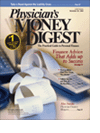Recognize the Depths of Diversification
T. Rowe
Price Investor
One of the main reasons forinvesting in mutual funds isthe efficient and effective waythey enable you to diversify.But according to an article in , your effort to diversifycould result in funds that hold the samestocks. This scenario, called fund overlap,occurs more often than you might think.The result is a portfolio that is not properlydiversified and could be inconsistentwith your goals and risk tolerance.
Cart Before the Horse
According to the article, fund overlapoccurs when investors stray from theirinvesting strategies. This can happen ifyou buy a fund based on its recent performanceor on a recommendation froma family member without first consideringyour financial goals and risk tolerance.Instead, the article points out,investors should first design their investmentstrategies and then look for fundsthat will help them achieve their goals.
When designing your strategy, makecertain to include equities that cover abroad range of the market. Keep in mindsize (eg, large vs small cap funds), style(eg, growth vs value funds), domestic andinternational funds, and individualstocks. A diversified portfolio should alsoinclude a broad mix of investments fromdifferent industries. As a benchmark,keep no more than 5% of your portfolioin any one company's stock.
Of course, fund overlap can alsooccur when funds shift their holdings toadjust to market changes. For that reason,the article notes, check your portfolioat least once a year.
Doctor Detective
Checking for fund overlap is easy,thanks to online tools. For example,Morningstar's Portfolio X-Ray (www.troweprice.com/investmenttools) can provideyou with an in-depth look at yourportfolio. Start by entering the ticker symbolsfor each individual security andmutual fund in your portfolio, as well asthe dollar amount of each investment.You'll receive a breakdown of your investments,indicating the percentage for eachbroad asset category, such as US stocks,international stocks, and bonds. It willalso tell you how your assets are dividedamong small, mid, and large cap stocks.
Note:
Armed with that information, youcan compare it against your originalinvestment or asset allocation strategyand make adjustments where necessary.For instance, you may discover that youhave too much invested in growth fundsand too little in value funds. If so, beginmaking gradual shifts within your portfolioby directing new investments intocategories where your current exposureis too small. If you plan on makingchanges, analyze the potential taxconsequences.
